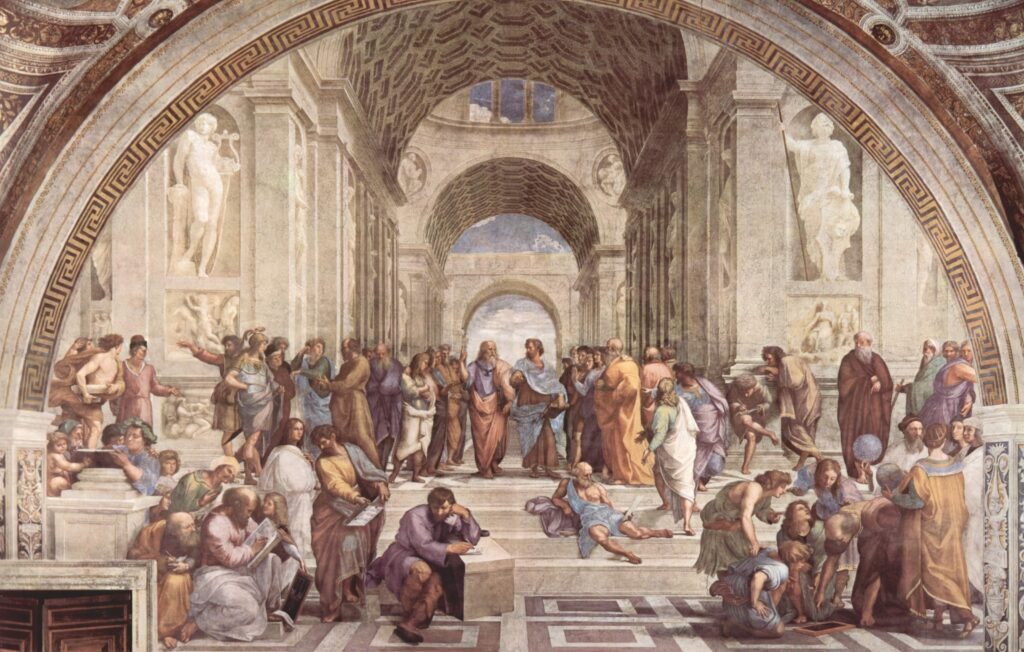Ancient Greece was a collection of more than 1000 linguistically and culturally related city-states in the northeastern Mediterranean. The people of ancient Greece were a curious bunch who came up with different systems and diverse forms of government to rule their states.

Ancient Greeks are considered the pioneers of the self-rule system that inspired the Liberal democracy of the United States and Western Europe.
More than 20000 inscriptions and 150 surviving speeches recorded by Greek scribes recording the history of their city-states have helped historians compile the complete history of governmental changes that took place in Ancient Greece.
The four most common types of government in Ancient Greece were democracy, monarchy, oligarchy and tyranny.
Democracy
The earliest form of democracy first appeared in the city-state of Athens during the period of Classical Antiquity. An ancient Athenian lawgiver Cleisthenes laid down the foundation of Athenian democracy by reforming the constitution of Ancient Athens in 508 BCE.
Soon other city-states of Ancient Greece, such as Syracuse, Erythrai, Argos and Rhodes established democracy as the system of governance. However, the form of democracy that existed in Athens is the most well-known among historians.
Athenian democracy featured a legislative assembly of all male citizens of Athens over the age of 18 known as the ekklesia, who gathered once a month on Pynx hill to speak and vote on the important matters of the city. The citizens of Athens consisted approximately 20% of the total population of the city, with around 3000-6000 people being active participants in politics.
Ancient Athenians also had an assembly of ten tribal representatives known as the boule and a court for citizens to discuss their cases called the dikasteria. The officials were selected through a lottery system and had a minimum tenure of one year.
Greek historian Thucydides and the comic playwright Aristophanes were critical of Greek democracy as they believed that people could easily be swayed by popular leaders and good public speakers.
Oligarchy
Greek Oligarchy was likely the most widespread form of government in the city-states of Ancient Greece. Oligarchies often occurred after democracy had failed in a city as a means to restore peace and order.
In Greek Oligarchy, a small group of people ruled over entire city-states. We do not know much about this type of rule in Ancient Greece despite it being the most popular form of government.
After the breakdown of democracy in Athens in the fourth century BCE, the city was ruled by an oligarchy consisting of 400 citizens. There was also the brutal oligarchic regime of ‘The Thirty Tyrants’ in Athens in 404 BCE.
Monarchy
Monarchies were rare in the ancient Greek World, appearing in the city-states of Macedonia, Epeiros and Sparta. The monarchs had absolute power in Macedonia and Epeiros and Macedonia and ruled with the help of a puppet assembly.
Sparta is well known for its system of two kings. However, the monarchs did not have absolute power during the times of peace. They were kept in check by an assembly of city elders and could even be put on trial or exiled.
Tyranny
The most feared of all Ancient Greek rulers were Tyrants. They often took power by unconstitutional means and ruled without any assistance. Dionysios was a well-known tyrant who took power in the city-state of Syracuse in 405 BCE. His descendants continued to rule over the city for several generations.
However, tyranny did not hold the same meaning as it does in the modern world. The tyrants were not always evil or violent, as we can observe from the rule of an Athenian tyrant, Peisistratos, who paved the way for the establishment of democracy.
